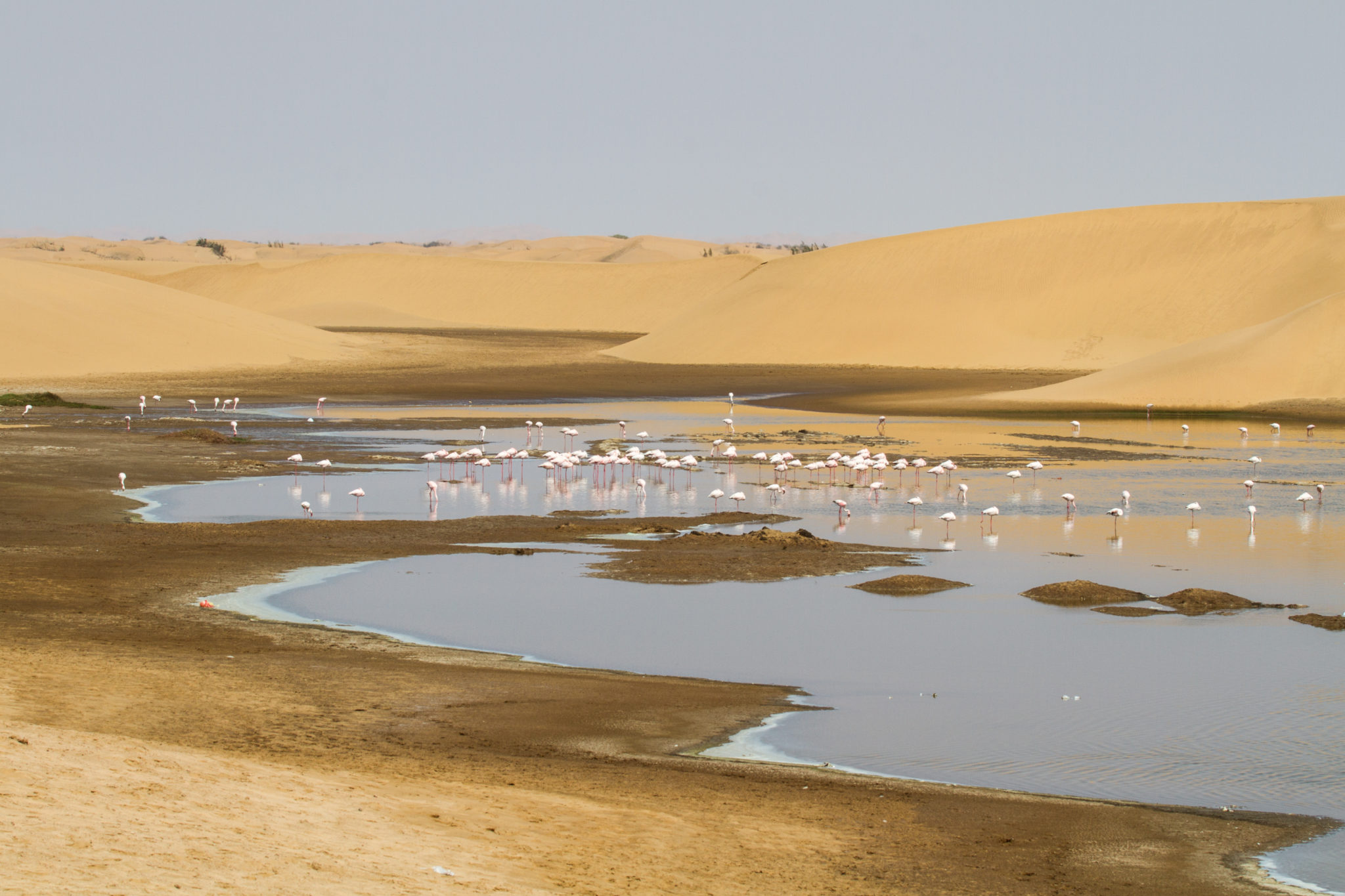
Climate change set to degrade 87% of African wetlands for migrating birds
A staggering 87% of the Critical Sites in Africa for waterbirds are projected to become less suitable for these species by 2050, according to a new study published in Global Change Biology and authored by Wetlands International, BirdLife International, the British Trust for Ornithology, the Rubicon Foundation, and McGill, Kassel, Wisconsin, Lausanne and Moscow State Universities. Over half (55) of the 100 Critical Sites most vulnerable to climate change are located in Africa.
“There is a large number of high priority sites in Tunisia, Tanzania, Namibia and South Africa, including famous sites such as the Etosha National Park or the Okavango Delta. These sites cover a high proportion of the entire population of already threatened waterbird species and will be hit hard by climate change” points out Frank Breiner, the lead author of the paper.
The distribution of waterbirds will be affected mainly by increases in local temperature and reductions in precipitation leading to higher evaporation and consequently less water in many wetlands. However, the availability of lakes and rivers will be also strongly influenced by hydrological changes upstream from the site. For example, the duration and extents of floods in the Inner Niger Delta, where most of Europe’s waterbird spend the winter, will be strongly affected by the amount of rain falling in the north-eastern part of Guinea and how much of this water is going to be extracted and diverted to other use. Consequently, the future of waterbirds will rely on water management and water allocations decisions.
“The study also highlights some key differences between Eurasia and Africa with far reaching implications for the management of protected areas. In the former region, suitable climatic conditions will shift more towards the north and waterbirds are already adapting to climate change by tracking these changes. As most of the Critical Sites are already protected under the EU Birds Directive, it will be possible to facilitate the redistribution of most waterbirds except the High Arctic species. However, the ranges of the Afrotropical waterbirds will not shift but they will fragment as more and more wetlands will dry out. Here, countries will need to focus on maintaining suitable conditions for the species for which they are currently important” comments Szabolcs Nagy of Wetlands International.
“Our results show that networks of protected and conserved areas will need to be managed more dynamically in future, as climate change forces species to shift their distributions. Management actions at particular sites focused on conserving particular species may need to be modified as the set of species for which the site is suitable changes” said co-author Dr Stuart Butchart, Chief Scientist at BirdLife International.
“This study relied upon wetland bird data from across Europe, Africa and parts of Asia, collected by a combination of citizen scientists and professional ornithologists. The maintenance and expansion of this monitoring, particularly across the most vulnerable parts of Africa and the Middle East, will be essential to track the ongoing impacts of climate change and the success of how we adapt our management of these precious wetlands in response.’ said Professor James Pearce-Higgins, co-author and Director of Science at the British Trust for Ornithology.
“This is another demonstration that the impact of climate change will affect nations that have contributed rather little green-house gas emission. However, wetlands are not only waterbird habitat but also important sources of food and water for local communities and they provide important regulatory services through carbon sequestration and disaster risk reduction. African countries will need strong support to design and implement climate change adaptation measures” adds Ward Hagemeijer the project’s supervisor.
The results for each species and site are available on the Critical Site Network Tool 2.0. at: http://criticalsites.wetlands.org/en.
The article Setting priorities for climate change adaptation of Critical Sites in the African-Eurasian waterbird flyways by Frank T. Breiner, Mira Anand, Stuart H.M. Butchart, Martina Flörke, Etienne Fluet-Chouinard, Antoine Guisan, Lammert Hilarides, Victoria R. Jones, Mikhail Kalyakin, Bernhard Lehner, Merijn van Leeuwen, James W. Pearce-Higgins Olga Voltzit and Szabolcs Nagy is available as an open access paper. Click here to access it.
This project is supported by the International Climate Initiative on the basis of a decision adopted by the German Bundestag and by the Agreement on the Conservation of African-Eurasian Migratory Waterbirds (AEWA).
For further information, please contact Szabolcs Nagy or Ward Hagemeijer.
The suitability of Critical Sites for waterbirds will decrease for large parts of Africa (red circles) but increase in Eastern Europe (blue circles) under climate change. Management of individual sites in the network must adapt to these changes, especially for high priority sites (large circles).
